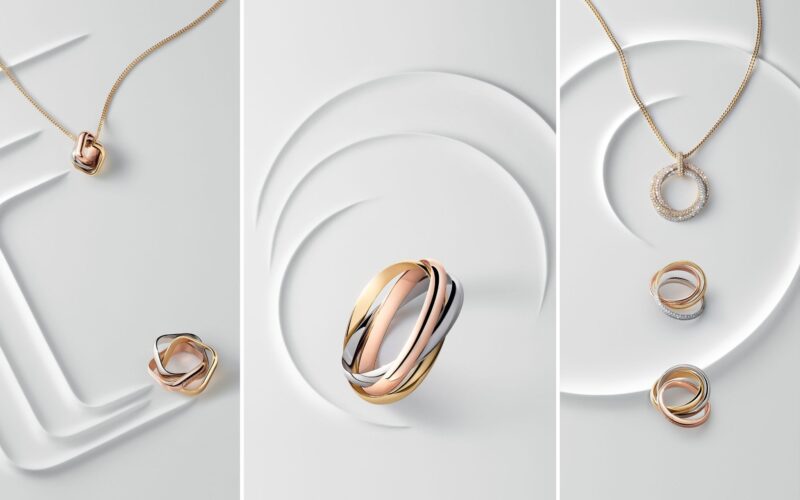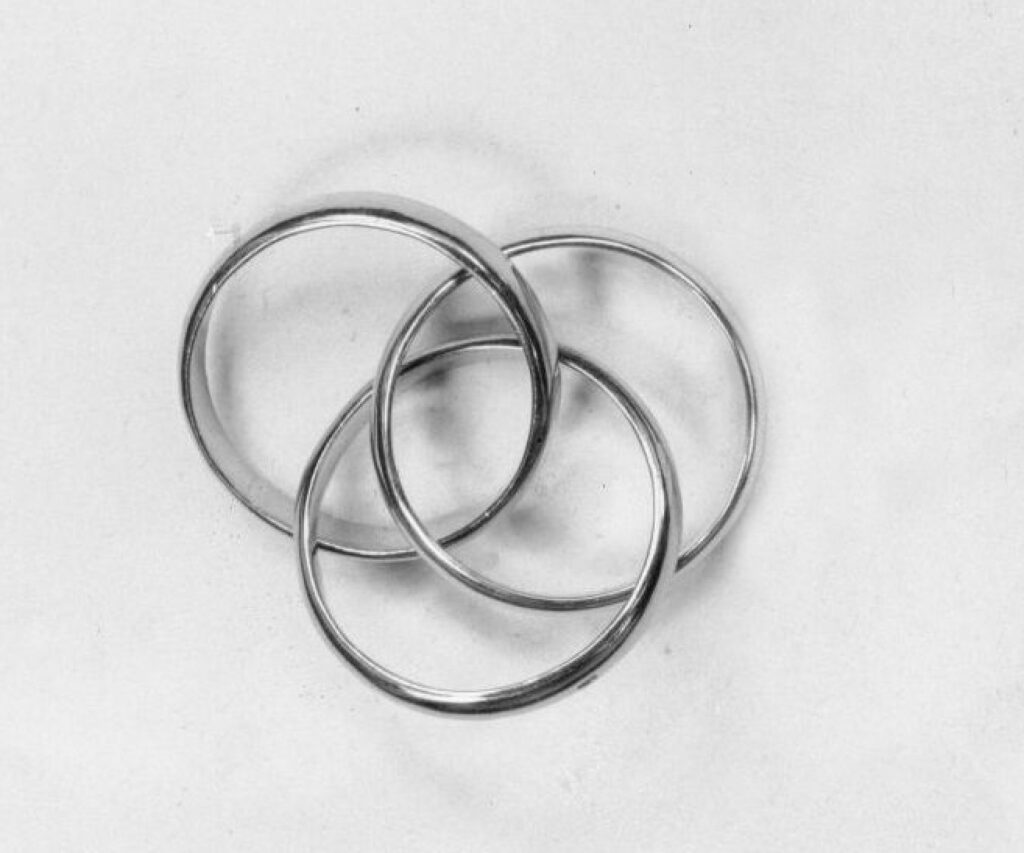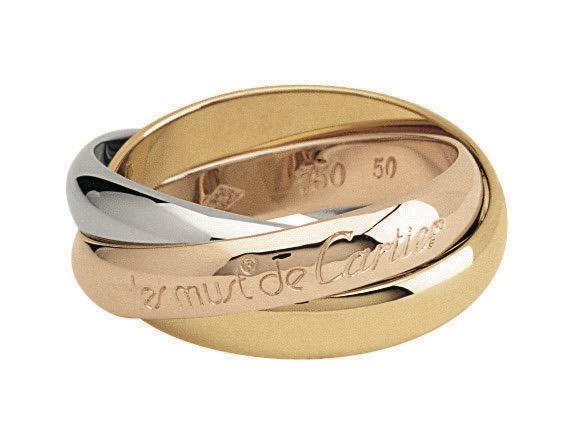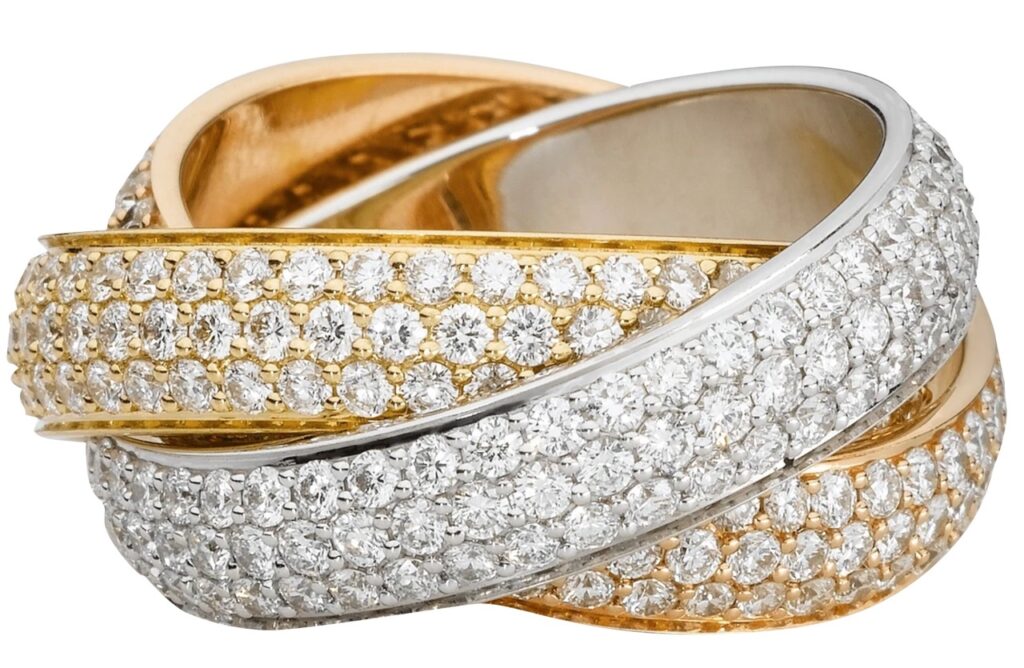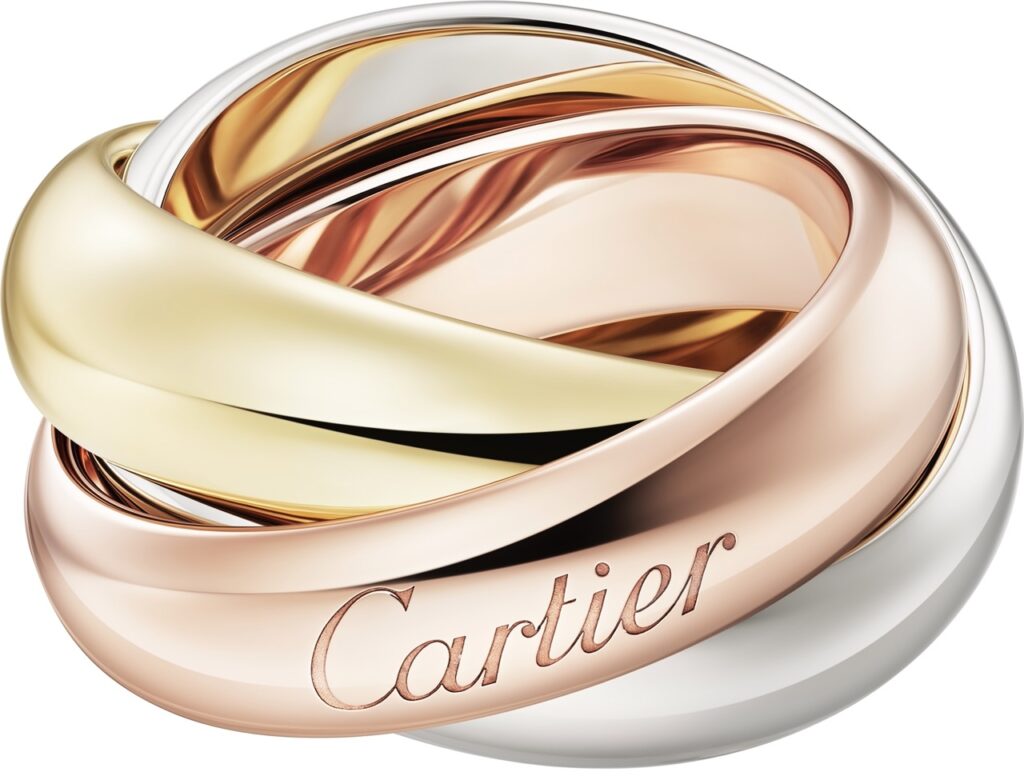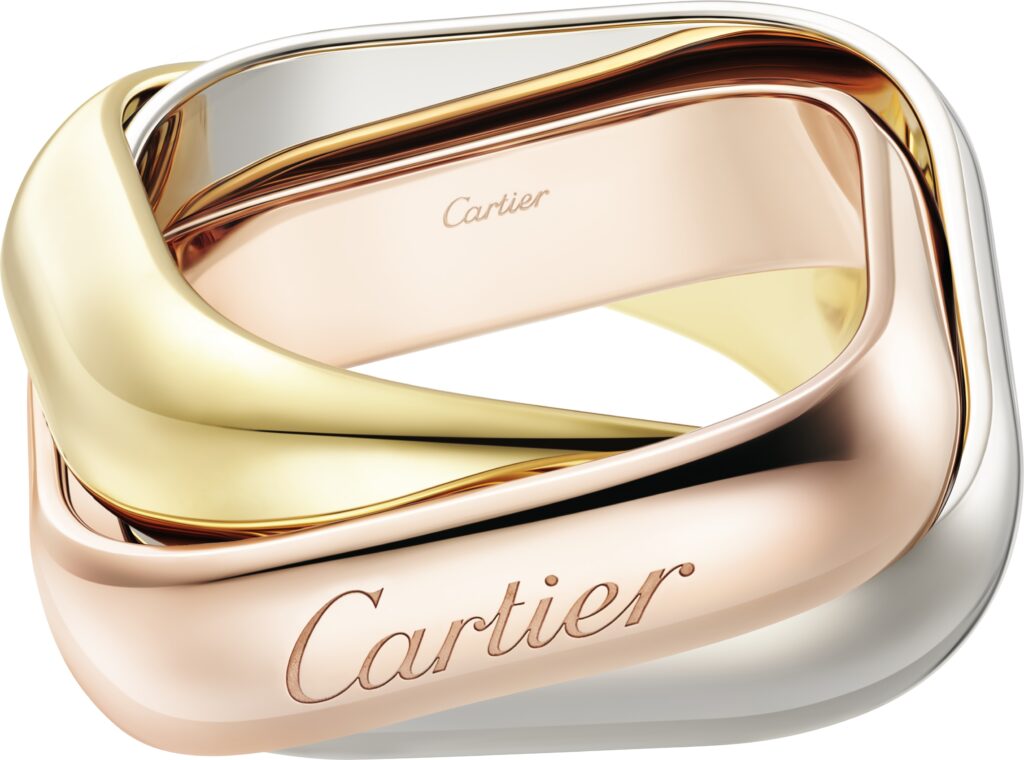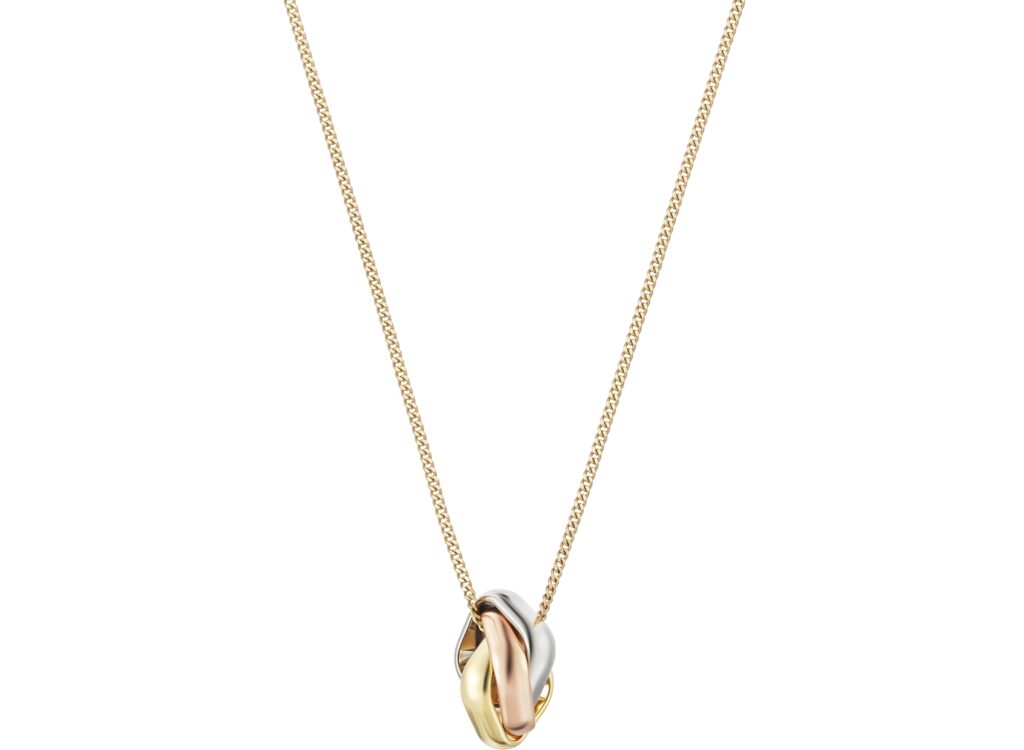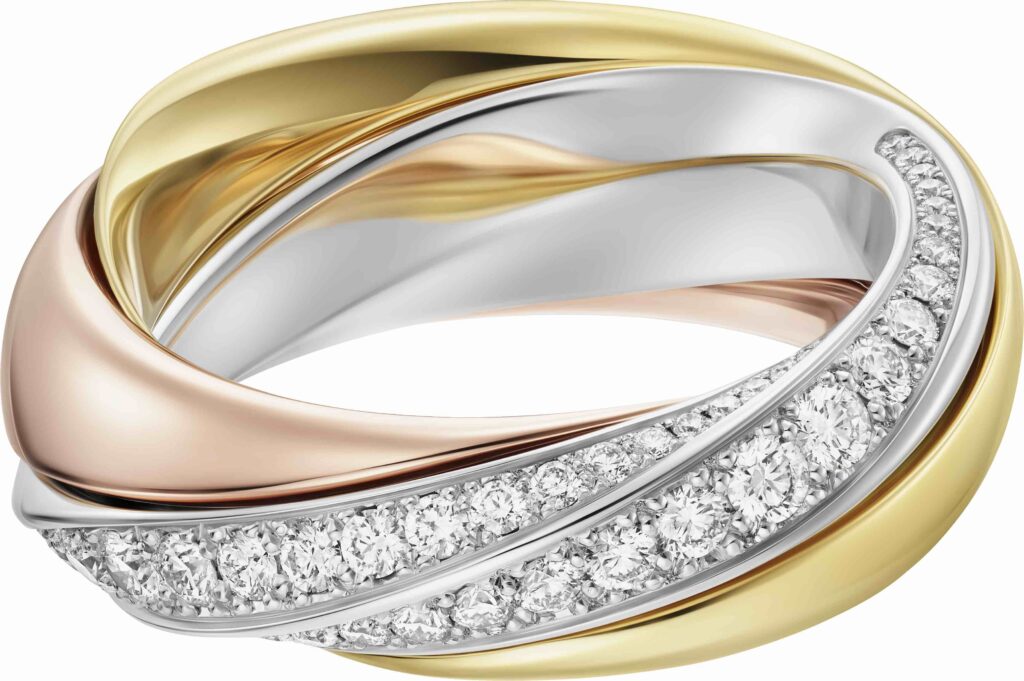Cartier celebrates the 100th anniversary of the Trinity ring, the Maison’s iconic statement piece that broke the norm and became Cartier’s first design icon.
The year is 1924 and Cartier had just imagined a ring composed of three intertwined, mobile bands in platinum, yellow gold and rose gold. This novel piece broke with the traditions of the craft by looking far beyond jewelry’s inherent focus on precious stones.
Everything about it was daring: the chromatic combination, the fluidity of the rings, the simplicity of the design and its symbolic strength. Needless to say, the Trinity ring was a predecessor of modernity.
Now, 100 years later, the Maison proudly celebrates the anniversary of the timeless piece of jewelry, which embodies Cartier’s most cherished values. The Trinity ring symbolizes diversity, which is exhibited through its three rings in yellow gold, rose gold and white gold that, when brought together, create harmony as a trio.
Love, in all its forms, may it be filial, familial, friendly, marital, infinite or indefinite, can all be expressed by the three rings that are full of meaning and sentiment.
Celebrating Trinity means celebrating Cartier, as it is basically where everything started. Trinity is a ring born from Louis Cartier’s imagination – a ring far from the norm at that time, which eventually brought jewelry into modernity and became the Maison’s first design icon. From the beginning, it has resonated with Cartier’s rich history and revolved around three – the perfect number — that of the three brothers, Louis, Pierre and Jacques, and that of the three historic Cartier boutiques in Paris, London and New York.
The Trinity ring is for everyone – famous or not – without age limits, boundaries or complexities, it is designed without the fear of taboos. It is a universal icon that weaves bonds of love into everyday life and whose codes have become Cartier’s signature. With its clean lines, the right proportions and precise shapes. The Trinity ring makes up the perfect equation and it is a creation that integrates the notion of comfort that relies on ergonomics and an understanding of the piece’s function.
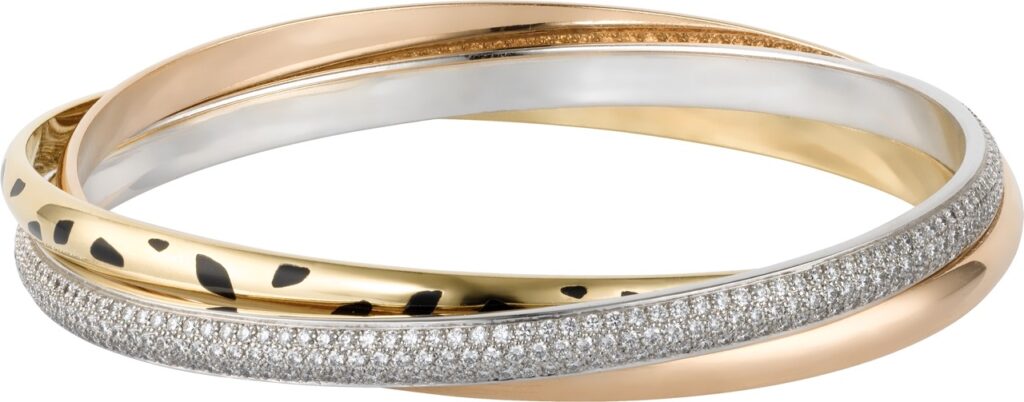
gold, rose gold, yellow gold, black lacquer and
diamonds
Trinity’s new charms
Thanks to its creative and auspicious design, the Trinity ring can be easily reinvented and is constantly being given a new twist by Cartier. There’s so much to play with here, such as the ring’s volume; fine rings or wider bands. They have been multiplied, to as many as ten, and stylized to include fluted, faceted and gadrooned rings.
Over time, Trinity has flaunted the use of the most creative materials, both precious and unexpected. Since 1924, Trinity has showcased it all.
Moreover, to celebrate 100 years of Trinity, Cartier has reimagined the iconic band with simple and pure yet daring new designs, the XL bracelet from the 2000s – a cult creation – has been reissued, and an XL version of the iconic ring has also been launched.
The chromatic trilogy quality consisting of white gold, yellow gold and rose gold is still present, as well as the mobility and clean lines. The only changes were the shape and the distortion of the bands. A creative and daring exercise in style, coupled with a geometric approach from the Maison’s creative studios has resulted in an original variation on the timeless Trinity.
The new version, which was available as of January 2024, is a cushion-shaped version that has rings that slide one above the other with the same naturalness as the round version. The new design is the subject of a collection made up of classic and large model rings all in gold, or paved with diamonds, a bracelet and a pendant.
Cartier takes a bold step and makes a creative statement with a singularly multiple version. A modular version, available as of March 2024, that can be worn as one wide, large band, or as three, depending on the wishes of the wearer. Interlocking, the three bands unfold like a construction game, revealing their diamonds as they move.
Cartier’s director of watchmaking and jewelry design Marie-Laure Cérède talked about the process of reimagining the Trinity collection.
“The idea of redesigning Cartier Trinity, an icon ‘par excellence’ seemed almost laughable, an impossible feat. But the challenge intrigued us. We forged ahead but freed ourselves from the obligation to produce a result at all costs. If a new design sparked inspiration, we would fully embrace it. But if it didn’t resonate, we agreed we would not push it any further,” she said.
She also added that the creative aim with the modular Trinity ring, which takes a counter-intuitive design approach, is the construction then deconstruction.
“Like a Kumiki puzzle, we envisioned the Trinity bands interlocked as one structure, and then designed in reverse to deconstruct them into three. This naturally creates multiple ways to wear the same ring, which makes this Trinity so contemporary and adds to its universality. Wear the ring fused together for a discreet day look, then unravel the bands to reveal the diamonds at night,” Cérède concludes.
To learn more about Cartier, please visit www.cartier.com

